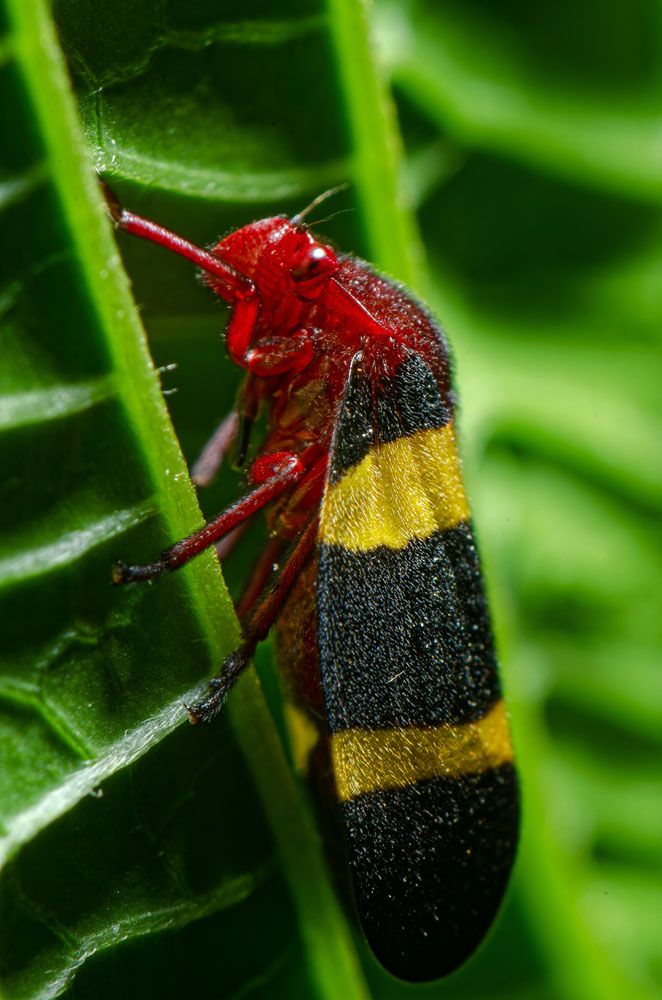
Twolined Spittlebug – Prosapia bicincta
Two-lined Spittlebug – Prosapia bicincta
Common Name: Two-lined Spittlebug
Latin Name: Prosapia bicincta
Appearance:
Adults are about 3/8 inch long, dark brown to black, and have two vivid red-orange lines spanning the forewings, which are held over the rear of the body. Immatures living in spittle masses are tiny and wingless, with white, yellow, or orange bodies, brown heads, and red eyes.
Host plant:
Redbud, holly, wild cherry, and turf grass lower stems and roots.
Territory:
Prosapia is a genus found in Mexico, Central America, South America, and North America.
Damages caused by two-lined Spittlebug:
The damage signs begin with discolored leaves and progress to the total withering of the stem and leaves, resulting in the death of the grass. The emergence of these symptoms is proportional to the number of spittlebugs feeding. Heavy two-lined spittlebug infestations can cause excessive spittle masses in the turf, resulting in a mushy feeling when stepped on. Water deprivation symptoms might be mistaken for feeding damage produced by nymphs and adults. Adults are more dangerous than nymphs. The adults inflict economic harm to ornamental hollies, namely Ilex spp., American holly, and Burford holly. Adult-mediated damage has also been seen on several perennial or annual hosts.
Life history and habits:
Eggs overwinter on grass stems, leaf sheaths, plant residues, and other safe places. In the spring, the nymphs hatch and begin eating. They often feed on the bottom sections of grass plants when humidity is high. Larvae may burrow deeper into the turf on hot, bright days. Before becoming adults, the nymphs eat for around a month. The life cycle takes about 2 months to complete. During the summer, eggs take two weeks to hatch. Adults begin producing eggs when they are 1 to 2 weeks old. Every year, at least two generations are born.
